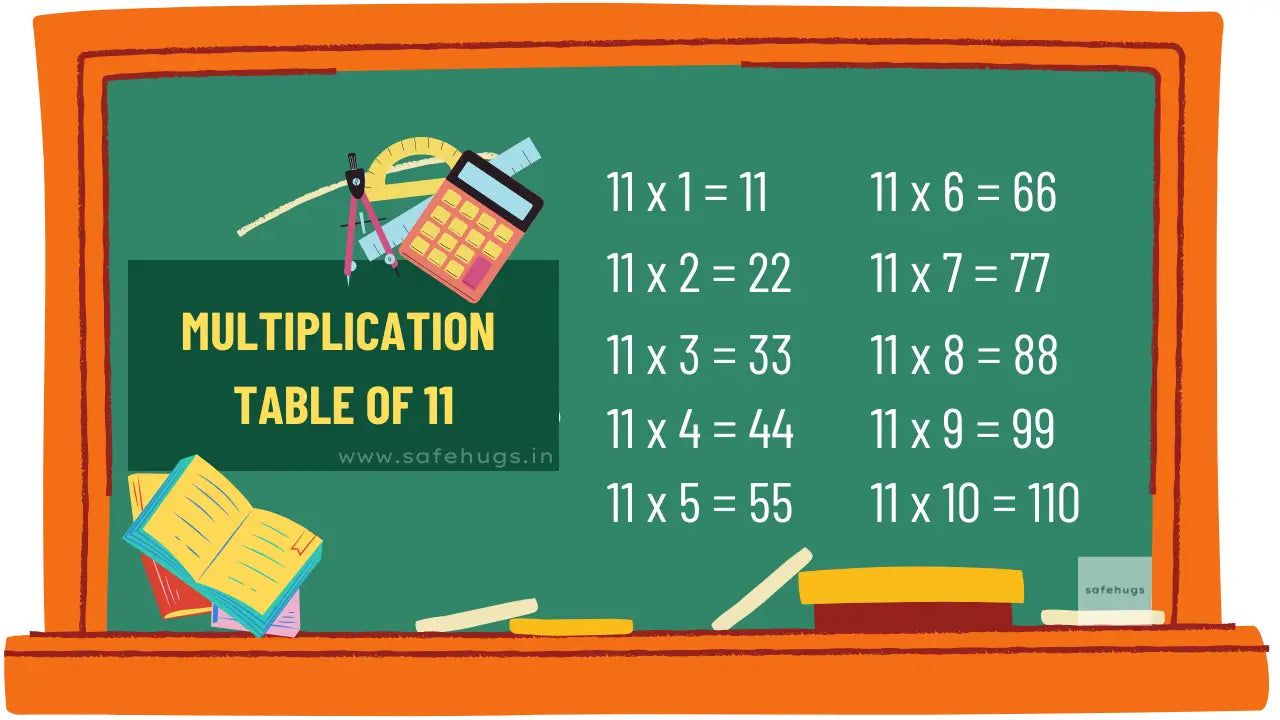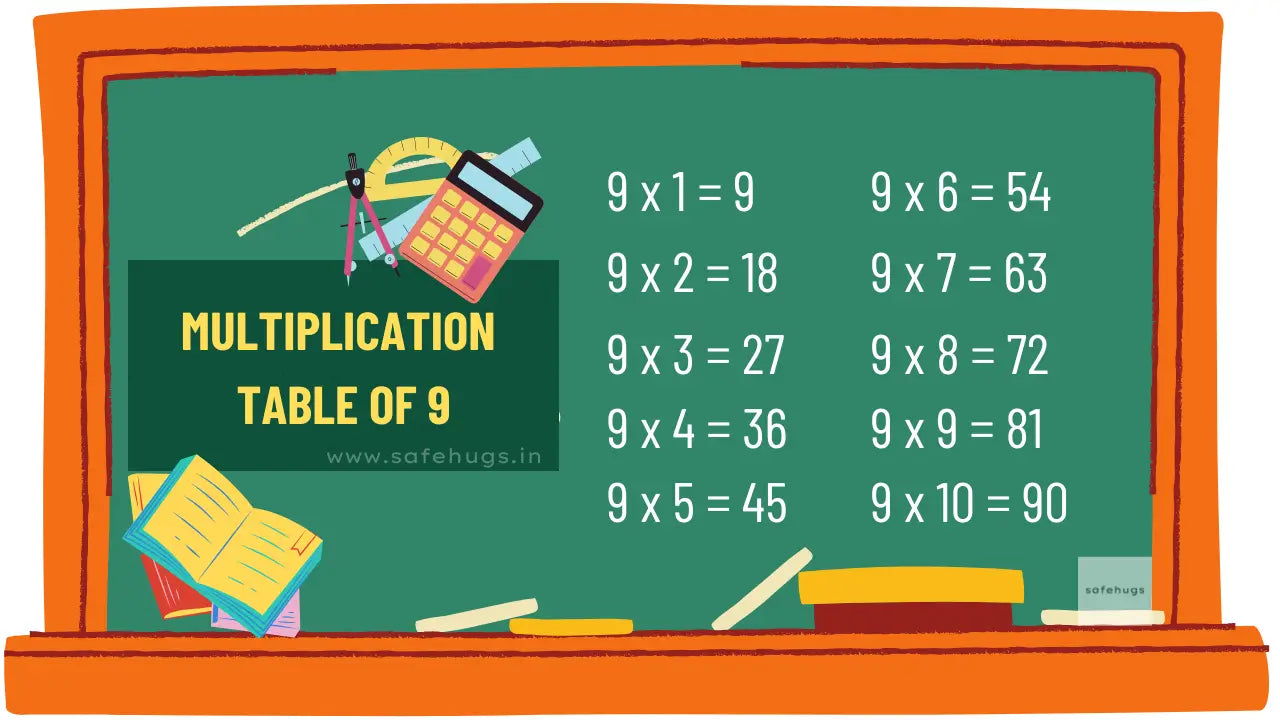7 Table: Multiplication Table For Kids (Print PDF)
Multiplication tables are fundamental tools in math that help simplify calculations by displaying the results of multiplying one number by another. In this article, we'll explore the 7 table and share some tips and tricks to make learning fun and engaging.


Tips & Tricks for Learning the Table of 7
-
Counting Pattern - The 7 times table follows a unique pattern in the units digits: 7, 4, 1, 8, 5, 2, then repeats.

-
Multiples of 5 + Multiples of 2 - Break down 7 as 5 + 2, then multiply by each and add them.
Example: For 7 x 6,
5 x 6 = 30 and 2 x 6 = 12
So 30 + 10 = 42 = 7 x 6

-
Hands-On Finger Counting
Use your fingers to count up by 7s for each multiplication fact.
For 7×4, count four times by 7 on fingers: 7, 14, 21, 28.
Physical counting helps younger kids stay engaged and reinforces counting. -
Teach kids to add 7 repeatedly. Start with 7, then add 7 to get 14, then add 7 again to get 21, and so on. It helps reinforce addition skills and internalizes the sequence.

-
Doubling and Adjusting - Start with a nearby, easier multiplication fact and adjust.
Example: For 7×6, first calculate 7×5=35 and then add 7 to get 42. -
Learning the 7 table becomes simpler if you're already familiar with the 6 table. You can derive the multiples of 7 by adding natural numbers from 1 to 10 to the corresponding multiples of 6. Here's how:

-
7 Table Song

Fun Activities to Memorize 7 Table




Quiz Time: Test Your Knowledge





Why is Learning 7 table Important?
- Strengthens Basic Math Skills: Understanding and memorizing multiplication tables, like the 7 table, builds a strong foundation for higher-level math concepts that kids will encounter as they progress through school.
- Boosts Confidence: Mastering multiplication tables gives kids confidence in their math abilities, making them feel more comfortable when solving problems both in and out of the classroom.
- Prepares for Future Learning: The ability to recall multiplication facts quickly is essential for understanding advanced math topics like fractions, algebra, and geometry.
- Practical Life Skills: From calculating quantities in recipes to understanding measurements, learning multiplication tables prepares kids for practical applications they will encounter as they grow.
Additional Resources
To further support learning, here are some additional resources:
-
Educational Apps: Apps like "Kids Multiplication Math Games" or "Math Games: Math For Kids" offer interactive ways to practice multiplication tables.


- Websites: Websites like "Times Tables" and "Math Mammoth" provide multiplication games, quizzes, and printable worksheets.
- Printable Worksheets: Websites like "K5 Learning" have free downloadable worksheets for practicing the 7 Table.
- Songs and Videos:
Links to other tables
We've organized the multiplication tables from 2 to 20 with tips and tricks to make learning fun. You can also refer to these for extra practice.
| 23 | ||
| 24 | ||
FAQ'S
1. Why is learning the 7 table important?
Learning the 7 table strengthens mental math skills, making calculations faster and easier. It also creates a strong foundation for advanced math topics like division, fractions, and algebra.
2. What are some tips to memorize the 7 table?
Break it into smaller steps, recognize patterns (like adding 7 repeatedly), practice with flashcards, or use fun quizzes and games. Writing the table multiple times also helps reinforce memory.
3. How can the 7 table be used in real life?
The 7 table is useful in everyday situations, such as counting items in sevens, calculating weekly schedules, and solving math problems. For example, knowing the 7 table helps with time management since there are 7 days in a week.
4. At what age should kids start learning the 7 table?
Kids can start learning the 7 table around ages 8 to 10, after they have a strong grasp of smaller tables. This prepares them for more complex math as they progress in school.
5. Are there any tricks for quickly finding the multiples of 7?
Yes! A simple trick is to add 7 repeatedly to get the next multiple. For example, start with 7, then add 7 to get 14, then 21, 28, and so on (7, 14, 21, 28, etc.). This method builds the table step by step and reinforces the pattern of sevens.



























